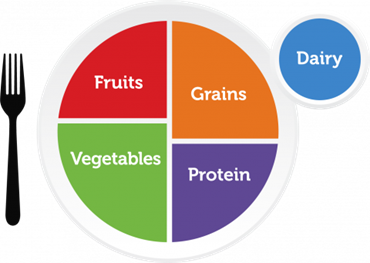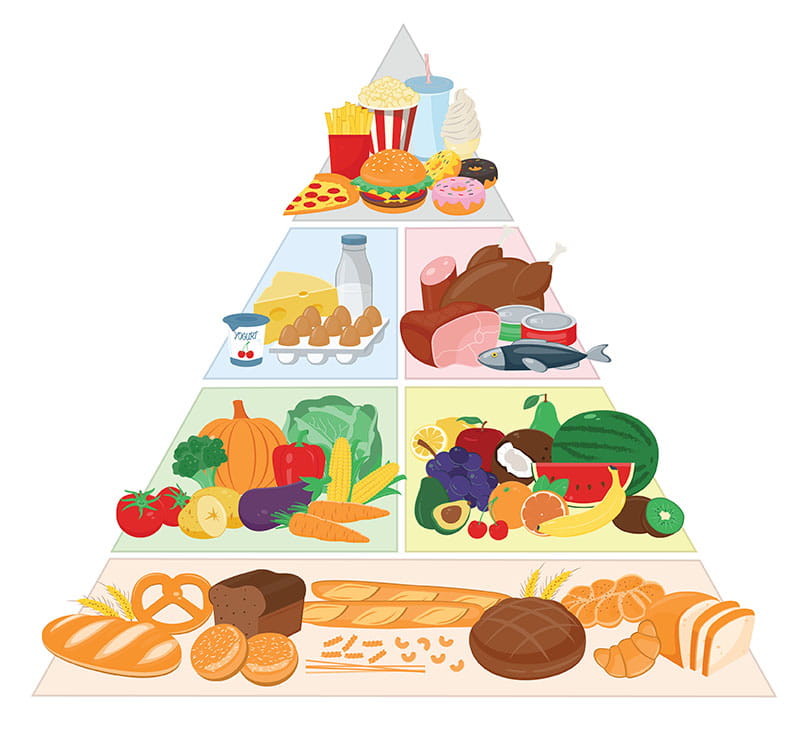A lot of us grew up with the food pyramid. Its wide base represented the foods we should eat in the largest amounts. The pointed top showed foods we should eat less of.
Introduced by the U.S. Department of Agriculture in 1992, the food pyramid was originally designed to be a simple picture of healthy eating.
Over the years, though, new information changed how we thought about nutrition. New layers were added to the simple pyramid. And what began as an easy-to-follow guide started to make less and less sense.
A simple way to fill your plate
MyPlate replaced the food pyramid in 2011. Based on new dietary guidelines, MyPlate keeps it simple.
“The food pyramid is very complicated,” U.S. Secretary of Agriculture Tom Vilsack has observed. “It doesn’t give you as much info in a quick glance as the plate does.”

The plate is divided into four sections, with a “glass” on the side for dairy. Half the plate—two sections—represents fruits and vegetables. A third section shows the amount of protein to consume in a day, a fourth represents grains.
Taken all together, it’s easy to see that fruits and vegetables should make up at least half of your diet.
Matching your budget and tastes
While a simple, visual guide to healthier eating sounds great, the new diagram doesn’t show busy parents how to translate that concept into meals every day. That’s where the website myplate.gov steps in.
Want to know how your family’s preferences and eating habits fit with MyPlate? You can take a quick online test to find out. The MyPlate website also provides menu ideas, recipes, and tips for shopping on a budget.
You can add the free MyPlate app to your smart phone to access recipes while you’re grocery shopping and find quick links to foods on sale near you.
Nutrition for every age and stage
Newborns, of course, are not getting their nutrition from foods you’d find on a plate. How do you meet the needs of babies? And what’s the best way to introduce food and create healthy eating habits as children grow?
Here are several resources to help:
- Another feature of the MyPlate website is guidance on the food needs of infants and children at every stage of their development.
- SCDHEC also provides tips for early childhood nutrition.
- And SC First 5 can connect you to a variety of programs that show new mothers and families how they can meet children’s nutrition needs, including programs that help families afford food.
This information is compiled from other sources. For more information, please refer to guidance from the sources above, your physician, or a nutritionist.

